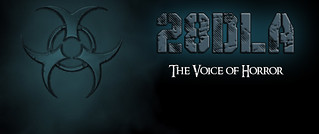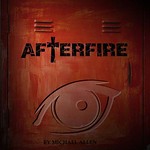 Campfire tales can sometimes involve a scary moment when it is being told on a lone summer's night. Just what lies out there, beyond the fringes of our vision, or our imagination? It is that fear of the unknown that primitive hunter-gatherers had to conquer and in what evolved from that, it became an early art form. Horror has evolved from early history where it took on mythical roots—where early creation myths are filled with monsters like demons, and good is often in conflict with evil. They existed in stories.
Campfire tales can sometimes involve a scary moment when it is being told on a lone summer's night. Just what lies out there, beyond the fringes of our vision, or our imagination? It is that fear of the unknown that primitive hunter-gatherers had to conquer and in what evolved from that, it became an early art form. Horror has evolved from early history where it took on mythical roots—where early creation myths are filled with monsters like demons, and good is often in conflict with evil. They existed in stories.The word ‘horror’ didn’t get used until after Horace Walpole's 1764 novel, The Castle of Otranto, was published. After the genre gained popularity in literature, and motion pictures was just becoming nouveau, the three films that hailed the beginnings of a horror film genre are: Das Kabinet des Dr Caligari (1920); Nosferatu, eine Symphonie des Grauens (1922); and Phantom of the Opera (1925).
Suspiciously missing is the Der Golem (1915-20) trilogy. Bits of footage has survived, but quite often, Der Golem, wie er in die Welt kam (1920), the third and final film, is confused with the first. Was that an oversight by the exhibit curators? As for why people love horror films, an answer may very well get revealed at Can't Look Away, The Lure of Horror Films exhibit at the Experience Music Project and Science Fiction Museum in Seattle. And at the same time, they can go see James Cameron's Avatar (adjoining the Horror Films exhibit), the "Battlestar Galactica" exhibit (third floor) and partake in the musical experience (Inner courtyard). There's plenty to explore inside and outside of the museum that’s located next to this city’s famous landmark, the Space Needle.
Or if the horrors of tourism really must be avoided, attendees can spend time to partake in everything that is nestled in the "Can't Look Away" exhibit. Instead of admiring all the displays, one can sit down and watch all the documentaries and shorts featured here. Films like the Exorcist, Evil Dead, Caligari, The Wicker Man, and Suspira are explored with short video clips that are produced exclusively for the museum to play throughout the day.
As attendees enter, they can wander around the medium-sized exhibit hall or keep walking ahead, where one of the first displays is a chronological timeline of the evolution of horror films. From the 20's to 70's onward, many aficionados will be hard pressed to disagree about this presentation. Even the products from Japan are heartily acknowledged.
Video shorts from many authors, scholars and filmmakers give their take in what defines the horror genre. Amongst those who are prominently featured are: Roger Corman, John Landis, and Eli Roth.
On display are the actual props used in movies like the axe from The Shining, Freddie’s gloves from Nightmare on Elm Street, or the goalie mask from Friday the 13th. The list does not end there.
Also, a few original pages featuring the penmanship of Bram Stoker’s “The Un-Dead” are on display, but that’s hardly the showcase. There are mini-documentaries that explain why all the major icons of the genre— the zombie, vampire, alien, cryptid and witch, to name a few—are considered popular. These shorts go into considerable depth and what's learned is very news worthy.
As with previous exhibits at this museum, the documentaries produced here are of a better quality that puts Discovery and History Channel’s products to shame. Quite often, these television programs only tease rather than give an academic lesson in 45 minutes.
For the few hoping to learn more about what they love without going back to post-secondary education, all they can do is scream. At least in this exhibit, there is a scream booth so that frustration can be aired out. Actually, a short video clip will play and the person in the booth will have to respond. A camera will take a snapshot and immortalize the terrifying moment for other museum patrons to look at. There's also an interactive shadow-theatre component in this space, where additional appendages and creepiness are drawn onto the shadows of passersby. These two displays are a carnival add-on, but that is part of the fun when visitors enter a chamber of horrors. That's the feel this exhibit is going for and yes, clowns can be scary too.
Location:
325 5th Ave. N,
Seattle, WA 98109
206.770.2700 or 1.877.EMP.SFM1
More on this exhibit at the EMP Museum
The EMP Museum Details
| | |
Advertise Here - Contact me Michael Allen at 28DLA
Subscribe to 28 Days Later: An Analysis Email Subscription


 Sunday, October 23, 2011
Sunday, October 23, 2011
 Edohotep
Edohotep


 Posted in:
Posted in: 


0 comments:
Post a Comment